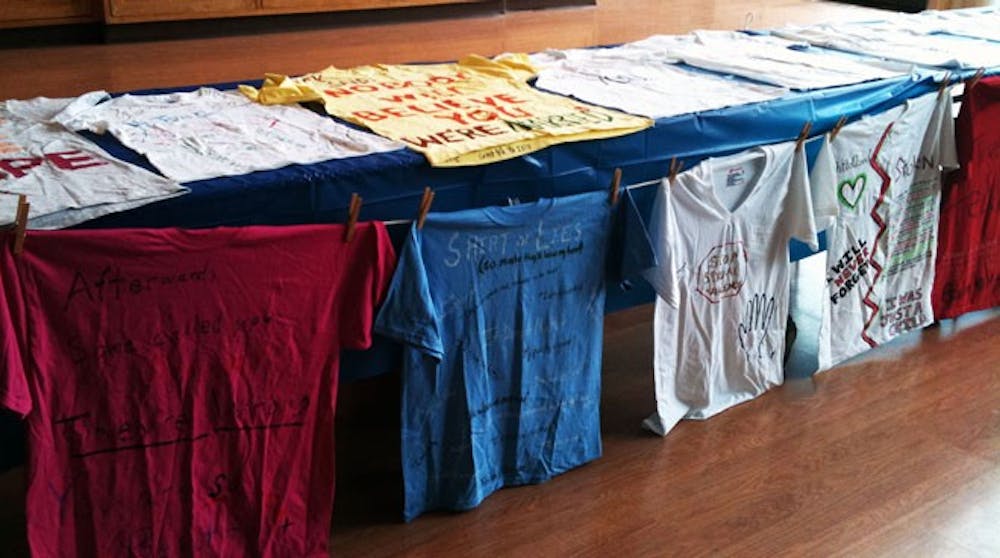More than two dozen t-shirts were draped across a table in the rainy-day light of the Tyler Haynes Commons Monday. Pamphlets fanned out across another table by the shirts. They included Counseling and Psychological Services and Action Alliance brochures, which ranged in topic from safety planning to emotional abuse. The shirts were decorated with paint and marker as part of the Clothesline Project organized by Women in Living and Learning.
The tradition of decorating shirts and hanging them on a clothesline to raise awareness about women suffering sexual violence was begun by visual artist Rachel Carey-Harper in October 1990, according to the Clothesline Project Web site. The idea was based on the concept that women in history, fulfilling domestic roles in the family unit, exchanged ideas and information with neighboring women while they manned the clotheslines in their yards, according to the Web site.
The women of WILL were involved in the project because the WILL program is devoted to bringing awareness of such issues as sexual violence to campus, as well as to convey to women suffering abuse that they are not alone, junior Janelle Sadarananda said.
The members of WILL spend a lot of time focusing on academics and discussions in relation to women's issues, so the project reminded them that it is beneficial to take action on campus as well, Sadarananda, the publicity chairwoman of WILL, said.
To prepare for Monday's display, women on campus stopped by the Westhampton Center on Sept. 29 and 30 to decorate the shirts, sophomore Emily DeAngelis said. Some women decorated the shirts for themselves, while others painted the fabric in honor of friends, DeAngelis, a WILL member who helped with the project, said.
"No one was really overseeing it because it was a personal experience," Sadarananda said. While one in four college women are reported to have survived rape, the painters of the shirts on campus remained anonymous, she said.
The shirts were color-coded to indicate what type of abuse the victim suffered, according to the Clothesline Project Web site. Included in the color scheme were white shirts, which represented women killed by violence, and red, pink and orange shirts, which represented women who had survived rape or sexual assault, according to the Web site.
Most shirts at the table in the Pier were white, with several blue, yellow and pink shirts included. One white shirt was painted with the words: "Love you."
On another white shirt was written: "I will never forget ... I was just a child."
Women who participate in the project today spread awareness about the issue of sexual violence, decorate as an act of personal therapy, and promote the idea that a woman suffering is one of many, according to the Web site.
The Clothesline Project on campus was not a part of the Richmond College It Ends Now campaign, but the two are interrelated, Richmond College Dean Joseph Boehman said. "We certainly support it," he said.
Members of the It Ends Now campaign are focusing their efforts on November's White Ribbon Campaign, he said.
Enjoy what you're reading?
Signup for our newsletter
Globally, the White Ribbon Campaign is the largest effort by men to stop violence against women, according to the national Web site.
Contact staff writer Katie Toussaint at katie.toussaint@richmond.edu.
Support independent student media
You can make a tax-deductible donation by clicking the button below, which takes you to our secure PayPal account. The page is set up to receive contributions in whatever amount you designate. We look forward to using the money we raise to further our mission of providing honest and accurate information to students, faculty, staff, alumni and others in the general public.
Donate Now



